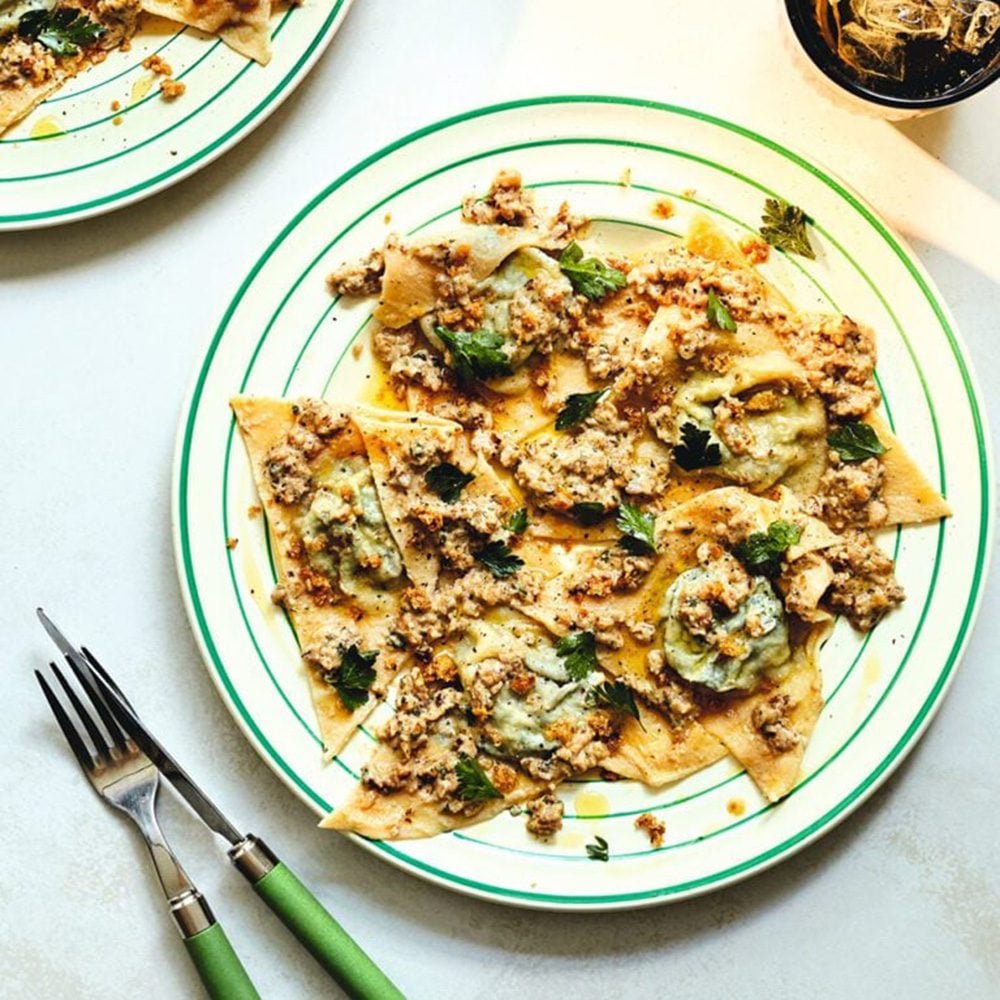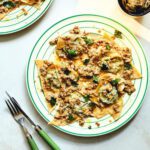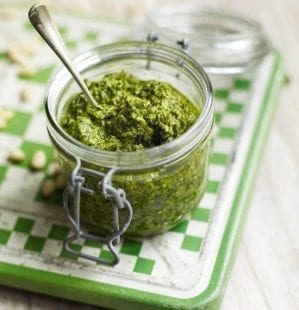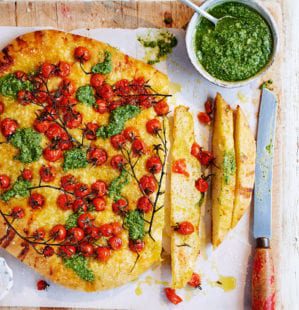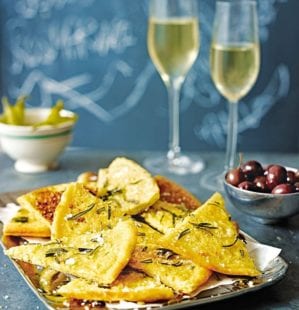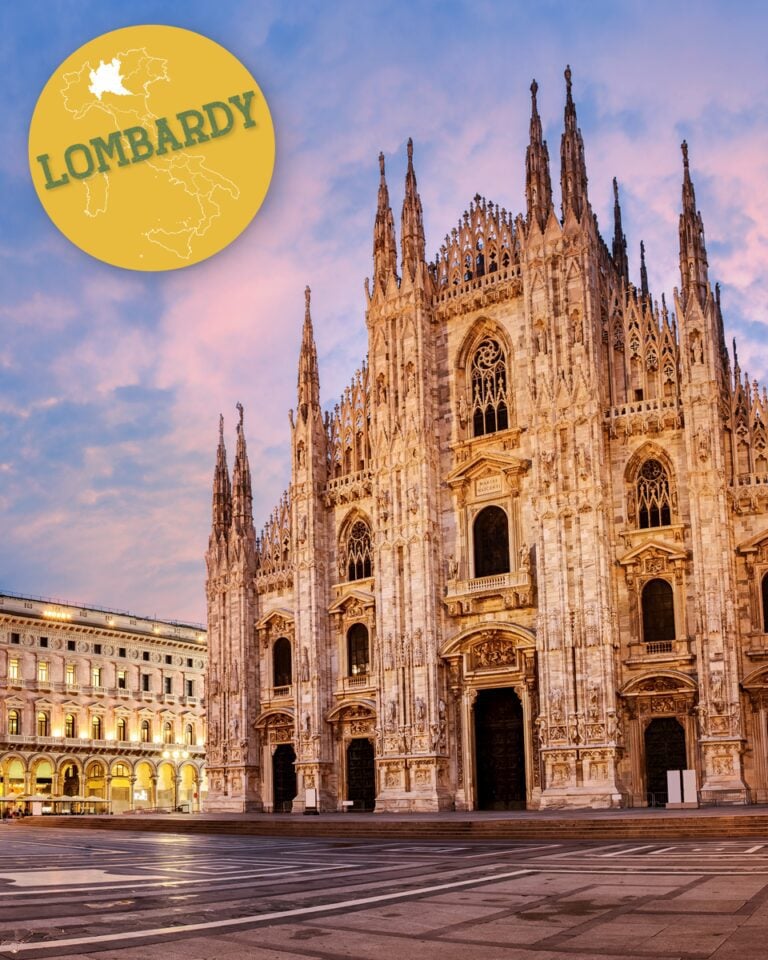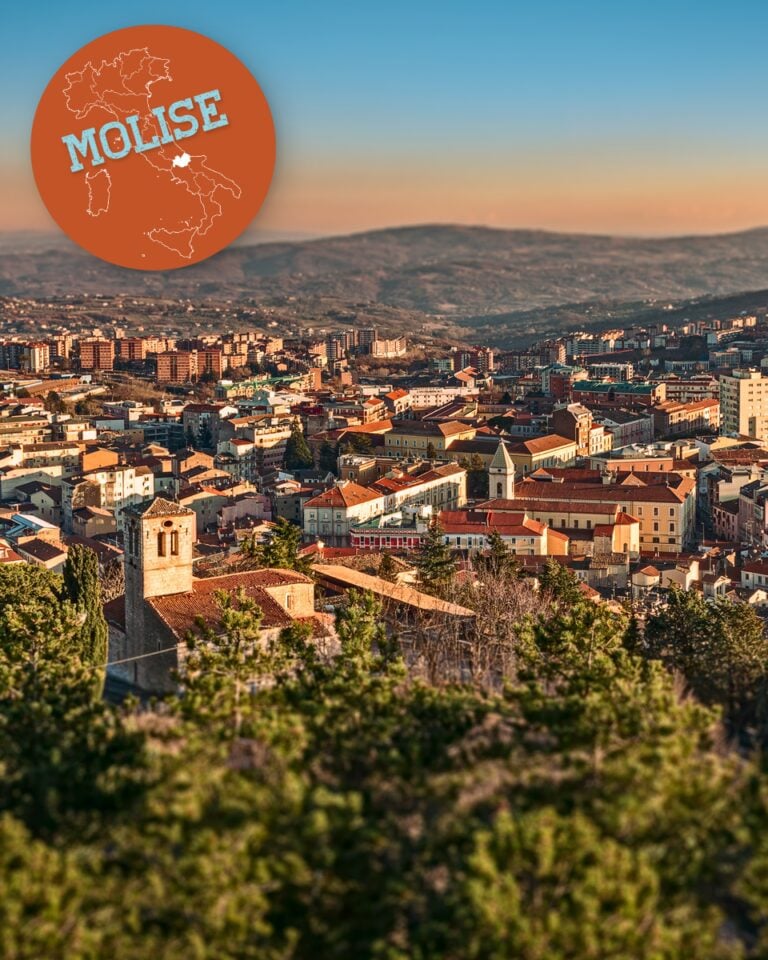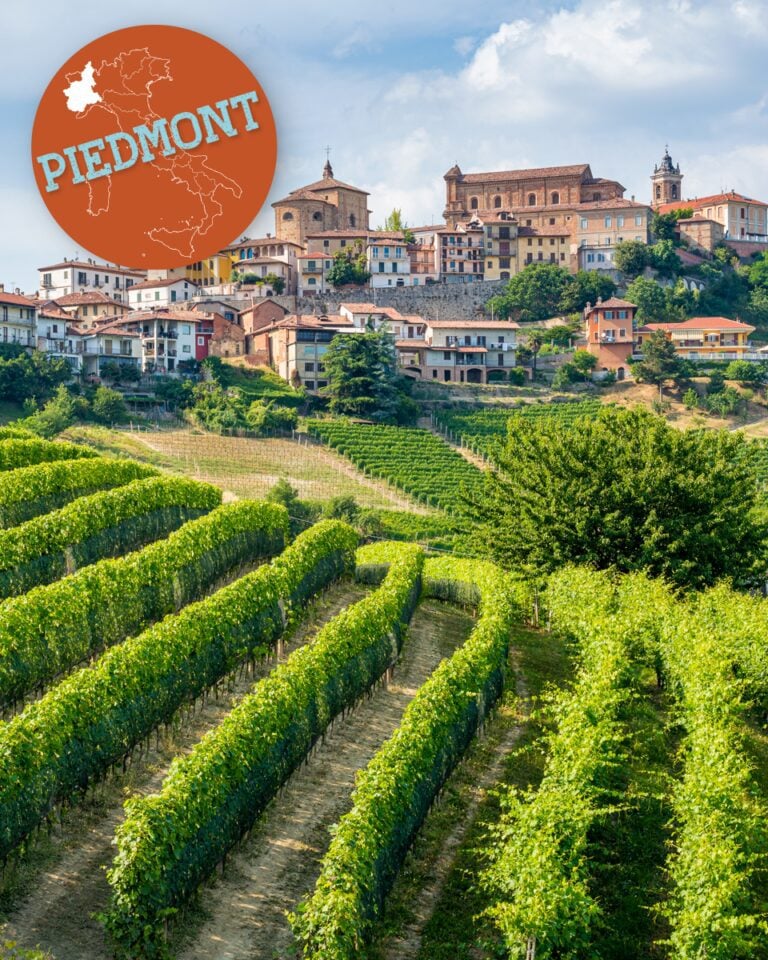Your essential food guide to Liguria
Discover the food, drink and dishes Liguria is best known for with our food lover’s guide to the region. Fish is obviously prevalent in the local dishes, but what sets Liguria apart from other coastal regions is its particular love for vegetables. Potatoes, courgettes, beans and asparagus are all more popular than even tomatoes, which tend to be surprisingly elusive in traditional Ligurian dishes.
Scroll on (or use the menu below) for a taste of everything that makes the food of Liguria so special.
Take a food lover’s tour of all 20 Italian regions with delicious. No flights necessary!
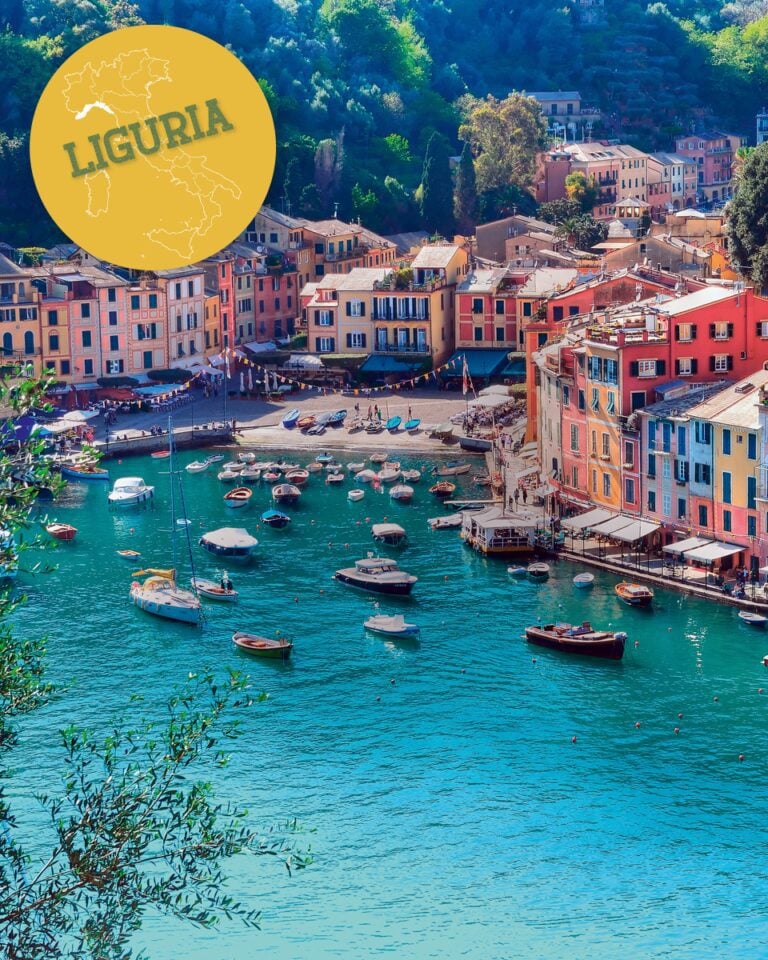
- The must-make recipe from Liguria
- What are the traditional ingredients in Liguria?
- What are the famous dishes from Liguria?
- The best cheeses to try from Liguria
- The best wines to try from Liguria
- The delicious. team’s top food experiences in Liguria
Get to know the food of Liguria
For a northern region, Liguria has a touch of southern Italy about it. Home to the beautiful Cinque Terre – five beautiful fishing villages with multicoloured buildings built into the cliffs – this part of the country is home to both the turquoise seas of the Italian Riviera and the jagged Apennine mountains, making its landscapes truly unique. It shares a border with Provençal France which influences its food, but the real jewel in Liguria’s culinary crown is pesto genovese – made using the region’s famous basil, pine nuts and olive oil. It’s also responsible for giving the world focaccia, and boasts a large number of local pasta shapes.
Genoa, the region’s capital, is full of history and was a significant trade hub over hundreds of years – which is why you’ll find the likes of pine nuts, raisins and chickpea flour used in traditional dishes. Tripe is also popular in the city, as are small pies filled with all manner of seasonal vegetables.
Our hero recipe from Liguria
 Pansotti con salsa di noci (stuffed pasta with walnut sauce) by Ben Waugh, executive chef at restaurant Bancone
Pansotti con salsa di noci (stuffed pasta with walnut sauce) by Ben Waugh, executive chef at restaurant Bancone
“This is a deeply comforting way to eat pasta and it’s well worth the patience required,” says Ben. “The walnuts create a nutty texture against the creaminess of the ricotta and gentle herbs and greens.”
Ben rose through the fine-dining ranks working for Gordon Ramsay at The Savoy Grill and Pétrus before joining Bancone in 2021 as executive chef. Looking after the food at three London sites, he applies his classical techniques and Michelin-starred skills to the Italian pasta-led dishes the group has become famous for.
Cook Ben’s pansotti con salsa di noci (stuffed pasta with walnut sauce)
What are the traditional ingredients in Liguria?
- Basil Liguria’s basil genovese is a variety of the herb known for being particularly sweet and is a key component in an authentic pesto. But there are an incredible 60 different types of basil grown in the region. Pesto aside, it’s also used as a key flavouring in stews and soups, and of course a few leaves tend to garnish most dishes from the region.
- Pasta The region has a particularly high number of unique pasta shapes. The most famous include pansotti (triangular ravioli filled with ricotta and greens – often wild); corzetti (discs of pasta cut using stamps with various patterns and pictures on them); trofie (hand-rolled twists of eggless pasta) and trenette (a slightly wider version of linguine).
- Chickpeas Liguria’s street food tends to fall into two camps: snacks made with bread, or snacks made with chickpea flour. The pulse is hugely important in the local cuisine and the flour was a vital commodity to keep Genoa’s sailors fed when out at sea in centuries past.
- Olives Taggiasca olives are native to Liguria and are famed for both their oil and their eating qualities. Small, plump and – when prepared for eating – a dark brown-black colour, they are sweet, fruity and a little citrussy, which is why they’re the olive of choice in the region’s seafood dishes.
- Potatoes With all that pasta, rice, bread and polenta on offer, potatoes generally don’t feature too prominently in Italian cooking. That’s not the case in Liguria, where you can find them baked into pies, tossed through pasta, baked in cream and even sliced, battered and deep-fried.
- Fish All those beautiful little fishing villages along its coast ensure that fish and seafood play a vital role in Ligurian cuisine. Tuna is caught off its coast along with sea bream, sea bass and cuttlefish, and there’s a local love for stockfish (dried cod) too – although this is imported from Norway.
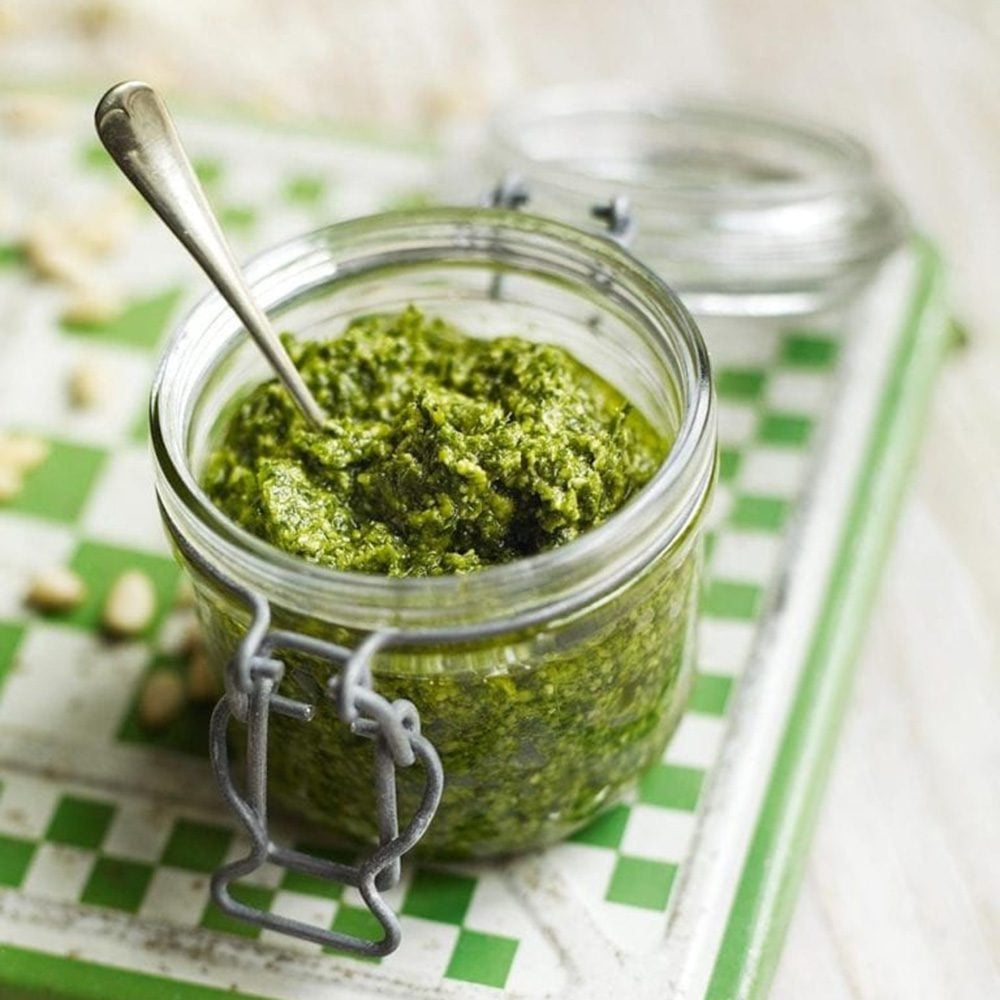
Potatoes are king in Liguria. Find them baked, fried, tossed into pasta and more...
What are the famous dishes from Liguria?
-
- Trofie al pesto The poster child for Ligurian cuisine the world over, this pasta dish sees the local shape trofie dressed in a basil pesto (made with the genovese basil, of course) with green beans and potatoes added.
- Focaccia genovese You’ll find focaccias all over Italy, but Liguria is home to the one we know best outside the country. Fluffy, salty and almost soaked in olive oil, it’s one of Italy’s most famous breads. You’ll also find dozens of other focaccias within Liguria, including the thin, flat, cheese-stuffed focaccia di Recco.
- Farinata A thick pancake made with chickpea flour and often flavoured with rosemary, this street food is an icon of Ligurian cuisine and an example of the similarities between the region and its neighbour France (where the dish is called socca).
- Capon Magro A seriously extravagant dish, this is a seafood and vegetable salad arranged in a pyramid, often with a whole lobster on top. The base is made of salted crackers, upon which layers of potato, green beans, salsify, langoustines, white fish and other shellfish are artfully arranged. It’s finished with a herby mayonnaise-style sauce. Traditionally eaten on Christmas Eve, but now regarded as a blowout celebration dish whatever time of the year it is.
- Torta sacripantina A Genoese sponge cake layered with zabaione, mascarpone and cherries (although chocolate and nut fillings are also popular), this dessert is one of those dishes that are made both at home and enjoyed in cafés. Try chef Theo Randall’s version of torta sacripantina.
The best cheeses to try from Liguria
There’s a particular fondness for very fresh, soft, creamy cheeses in Liguria, the most famous of which is prescinsêua, which is almost like yogurt. There’s also stracchino (known locally as crescenza), which is similar in consistency to cream cheese, and brusso, which is a sheep’s milk ricotta often flavoured with wine or peppers.
The best wines to try from Liguria
Liguria produces very little wine, only beating the tiny, mountainous region of Valle d’Aosta to the north. The rocky cliffs that make up the majority of the land aren’t exactly prime vineyard real estate. That makes it very hard to find Ligurian wine outside of Italy (and even Liguria itself), but if you do happen across a bottle of the region’s white vermentino (which has mineral, piney notes) or red rossesse (light, bright and zesty), snap it up as both are famed for expressing the local terroir particularly well.
The delicious. team’s top food experiences in Liguria
 Hugh Thompson, Projects editor
Hugh Thompson, Projects editor
“I competed in the World Pesto Championships in Genoa – and didn’t realise it was so serious. I also toured a focacceria (hundreds of types of things on bread) and artisan pasta shop with various contraptions to make pasta shapes. PS: I didn’t win!”

Emily Gussin, Food producer and sustainability lead
“On our last day in Cinque Terra we went to a little bakery near our Airbnb for a quick breakfast before we headed to the airport and discovered the most amazing pastries we’d been missing out on the whole stay. The chef had worked all over the world, most notably France and Japan, and now had returned to Italy to run a very unassuming cafe. We had amazing brioche buns – one stuffed with pistachio paste.”
Subscribe to our magazine
Food stories, skills and tested recipes, straight to your door... Enjoy 5 issues for just £5 with our special introductory offer.
Subscribe
Unleash your inner chef
Looking for inspiration? Receive the latest recipes with our newsletter
